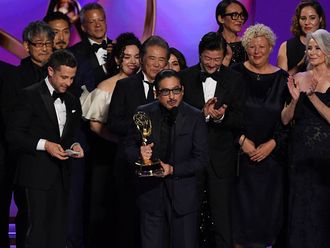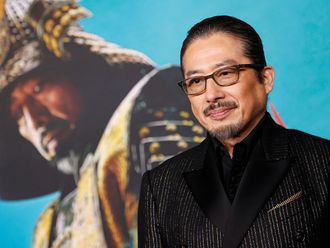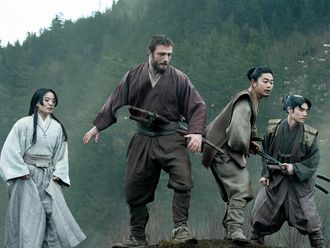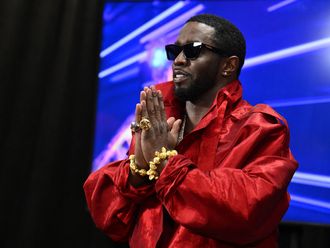
The best stories on our planet are natural ones," says Alastair Fothergill.
But you'd expect him to say that. For two decades with the BBC, Fothergill has produced wildlife documentary series including Planet Earth, Blue Planet and, back in 1993, Life in the Freezer, which explored Antarctica in all its frigid wonder.
Now he's executive producer of Frozen Planet, a Discovery Channel/BBC co-production that takes a fresh look at Antarctica as well as its north-end counterpart, the Arctic, in seven gorgeous episodes. And while you may not be ready to dismiss filmdom's stars and screenplay writers as unnecessary, Frozen Planet makes a strong case that nature — captured in the wild — can equal Hollywood for epic sweep and drama.
Comedy, too. In the second episodes, male penguins by the hundreds of thousands anticipate the spring return of the females, for whose favour each male must compete by building a swankier nest than his rivals. In a delightful sequence, a painstaking penguin gathers stones one by one, only to have them filched, one after another, by a scheming neighbour whenever the hapless suitor's back is turned. These performers, with their Chaplin-esque gait and impeccable timing, would have been right at home in a 1920s two-reeler.
There's also bittersweet romance on Frozen Planet. Nature's ultimate loner, a 635-kilogram male polar bear, has lumbered across the ice all winter in search of a mate come spring. Picking up her scent from 16 kilometres away, he finds her, after which they share a tender interlude. Then, just two weeks later, their brief encounter ends as they are fated to part.
Plus, there are thrilling, life-or-death confrontations in the series. Three-ton elephant seals brawl over females. A pack of 25 wolves brings down a huge bison. A wide-eyed Weddell seal falls prey to hungry orca whales that, working as a team, can stir up giant waves to wash these frantic seals from the refuge of their ice floes.
Natural drama
And talk about "special effects"! An unprecedented time-lapse shot underwater records the growth of a brinicle — an ice stalactite progressing downward toward the seabed — killing everything its frozen plume touches. This otherworldly sight is as eerie and magical as a CGI effect from a sci-fi film. But it's real.
"That's the thing about the natural world: It gives you amazing natural drama," says Vanessa Berlowitz, Frozen Planet series producer. "It looks like it's scripted, but we don't fake anything. Everything that we film is a complete portrayal of reality. And the audience thinks, ‘Wow, they did that without trained animals!'"
Berlowitz has produced and directed a score of BBC documentaries, including two episodes of Planet Earth, and, like Fothergill, she logged time at both poles for Frozen Planet. She lived aboard a Royal Naval icebreaker for four months filming penguins and whales, and, in the Arctic, spent three weeks filming female polar bears and their cubs while she was five months pregnant.
Cinematic approach
Through it all, the filmmakers served as passive observers. But they took a cinematic approach to planning multi-angle coverage of action they hoped would unfold.
"We were very keen to storyboard the sequences beforehand," says Fothergill. "Then, when we got on location, we would sit down and say, ‘Have we got all the angles? Let's work it all out.'"
Adds Berlowitz, "We approached these holy grail sequences thinking, ‘What will it take?'"
"The weather is often rubbish," Fothergill acknowledges. But physical discomfort isn't the real problem. "Everybody thinks it's all about storms and cold — but it's actually about ‘gray light,' when the ice looks really, really ugly. You can wait for weeks, and all the while the polar bear is doing his stuff, but you have to say, ‘Don't shoot it. Wait until the light is good.'"
On April 8, viewers go behind the cameras for a Making Of episode, which settles many how-did-they-get-that-shot questions raised by previous installments (and helps explain how people and equipment can function in temperatures as low as minus-58 degrees).
"The structure of our series," says Fothergill, "is to show the places. Then we engage in the animals' drama and lives. Then we show a bit of how we went about making the series. Then we let viewers learn about the environmental reality of it all in an objective, non-sensational, non-judgmental way.'"
Hearing that, Berlowitz quotes the late ecologist-documentary superstar Jacques Cousteau, who famously noted, "We only protect what we love."
"Our goal," says Berlowitz, "is to do films that make people fall in love with the animals and places. What we want is for people to love them."
Frozen numbers
The many up-close-and-personal scenes say as much about Frozen Planet as the vast scope of the enterprise, which can be expressed in remarkable statistics: four years in production, 38 camera persons, combined number of days in the field: 2,356, 1 1/2 years at sea, hours trapped in blizzards: 840.











